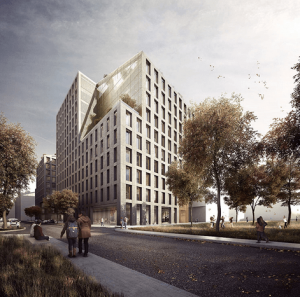 Our award-winning team has participated in a wide range of projects over the years. Many of them have been commercial architecture and become iconic properties. We take a different approach here than we would when building someone a home. Businesses have their own specifications and the scale can also be much larger. Using our knowledge of the industry, we help them meet their needs.
Our award-winning team has participated in a wide range of projects over the years. Many of them have been commercial architecture and become iconic properties. We take a different approach here than we would when building someone a home. Businesses have their own specifications and the scale can also be much larger. Using our knowledge of the industry, we help them meet their needs.
There are a lot of factors to consider when participating in commercial building construction. Designers deploy strategic approaches and materials depending on how people will use the building. Other factors include budget, climate, square footage, and occupancy. What we are going to do is discuss the separate kinds of construction methods you can use.
Wood frame
To start off, let’s look at wood frame building. This is a popular approach. It is a natural, renewable substance that is easy to work with and cost efficient. Designers utilise wood for framing, roofs, floor joists, and walls. However, they stop short of most external uses. Brick, stone, and non-wood siding provide excellent weatherability and more fire resistance than wood.
Wooden frame construction typically shows up the most in residential builds. But, it can work for commercial architecture like office buildings, restaurants, and more.
Light-gauge steel frame
Next, we have light-gauge steel frame. This particular metal is also a relatively low cost substance that has many of the same uses as wood. However, it won’t deteriorate in the same way timber can.
The steel is a popular commodity with commercial building. This is because it has a high flame resistance and strength-to-weight ratio. It can come with a galvanised coating for more protection. You can carry it, cut, and assemble it with ease on a job site. As a result, it is the preferred substance for mid-rise commercial structures.
Heavy structural steel frame
The last method we’ll discuss is structural steel. It is much heavier than light-gauge, offering more strength and load bearing capacity. As a result, we see heavy steel frame construction a lot with high-rise constructs and massive commercial architecture. Cranes make it simple to move materials up for rapid welding and assembly.
Another fact about this steel is that it provides a flexible earthquake-friendly option. It can also stand up against high winds, making it viable for bridges.
Most projects features a mixture of heavy steel and light-gauge. They tend to make up the primary and non-support structures respectively.
Talk to us about construction options for commercial architecture
At Coffey Architects, we have an extensive portfolio of commercial work. The projects we’ve done include ones involving retail outlets, office fit-outs and gallery spaces. By working closely with clients, we can make their spaces work efficiently.
So, if you’d like to work with a company excelling in commercial architecture, talk to us. We can choose any design and construction method to suit your ideas and the area.